Understanding NMR Spectrum and the Role of Electron Donating and Withdrawing Groups (EDG/EWG)
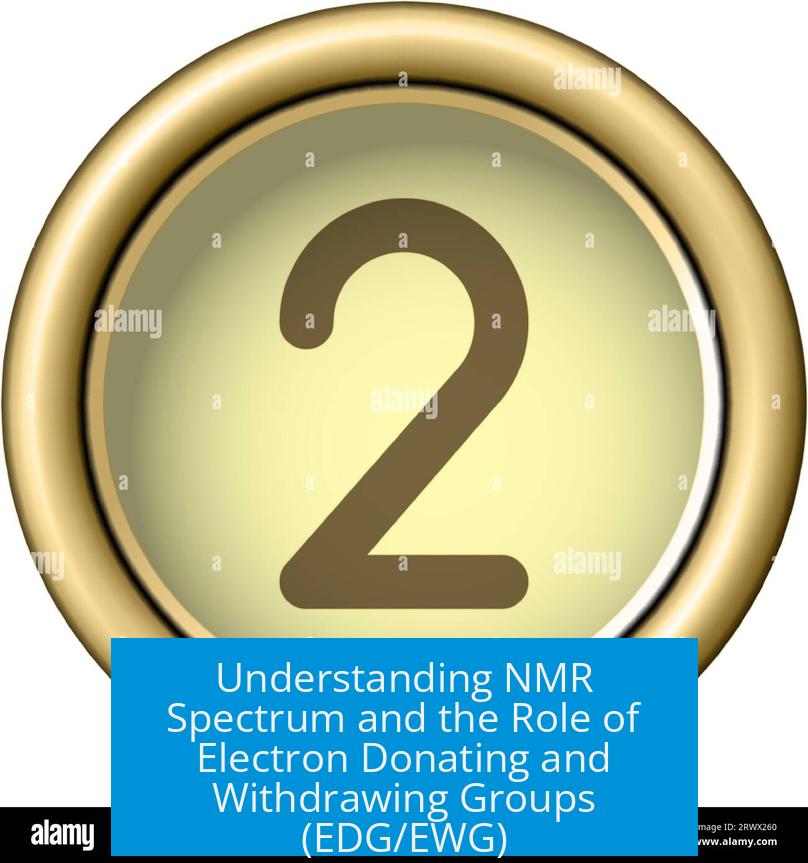
Electron donating groups (EDGs) and electron withdrawing groups (EWGs) significantly influence NMR chemical shifts by altering electron density around nuclei. EDGs increase electron density causing an upfield (shielded) shift, whereas EWGs decrease electron density causing a downfield (deshielded) shift.
1. Characteristics of EDG and EWG
- EDGs donate electron density through lone pairs or resonance. Common good EDGs include oxygen anions, alcohols, ethers, and amines.
- EWGs withdraw electron density via pi bonds to electronegative atoms. Typical EWGs are aldehydes, ketones, cyano groups, nitro groups, and esters.
2. Effect on NMR Chemical Shifts
EWGs reduce electron density at the nucleus, deshielding it and shifting signals downfield (higher ppm). Conversely, EDGs increase electron density, shielding the nucleus and causing upfield shifts (lower ppm).
For example, in the propane NMR spectrum, methyl (-CH3) hydrogens appear at 0.899 ppm, more shielded, while methylene (-CH2-) hydrogens appear downfield at 1.337 ppm due to electronic environment differences.
3. EDG and EWG Influence in Aromatic Substitution
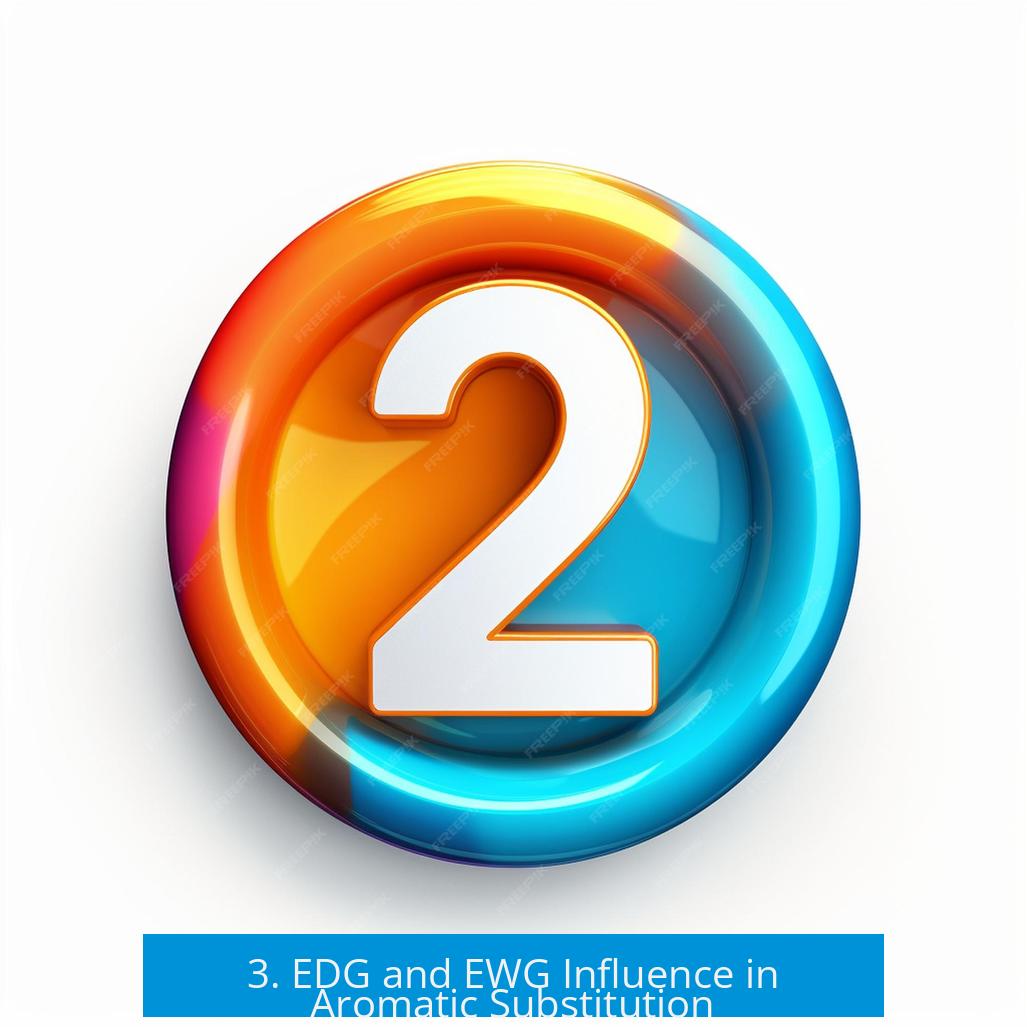
- EWGs are generally meta-directing because they withdraw electrons, stabilizing resonance structures with partial positive charge at meta positions.
- EDGs activate ortho and para positions by donating electron density via resonance, increasing nucleophilicity there.
- When weak EDGs and strong EWGs coexist, EWG effects often dominate due to stronger resonance withdrawal surpassing inductive donation.
4. Practical NMR Considerations
- NMR peaks shift based on both substituent effects and spectrometer frequency (e.g., 60 MHz vs. 300 MHz instruments).
- Clusters of peaks may represent different hydrogen environments rather than single hydrogens.
- Identical spectra provide limited structural information; differences induced by groups like EDGs or EWGs are critical for interpretation.
Key Takeaways
- EDGs increase electron density, causing shielded, upfield NMR shifts.
- EWGs withdraw electron density, causing deshielded, downfield shifts.
- In aromatic systems, EDGs direct electrophilic substitution to ortho/para positions; EWGs direct to meta.
- NMR shift depends on group electronic effects and instrument frequency.
- Understanding EDG/EWG influence is essential for interpreting complex NMR spectra accurately.
2 Questions Regarding NMR Spectrum and EWG/EDG: Unlocking the Secrets of Molecular Influences
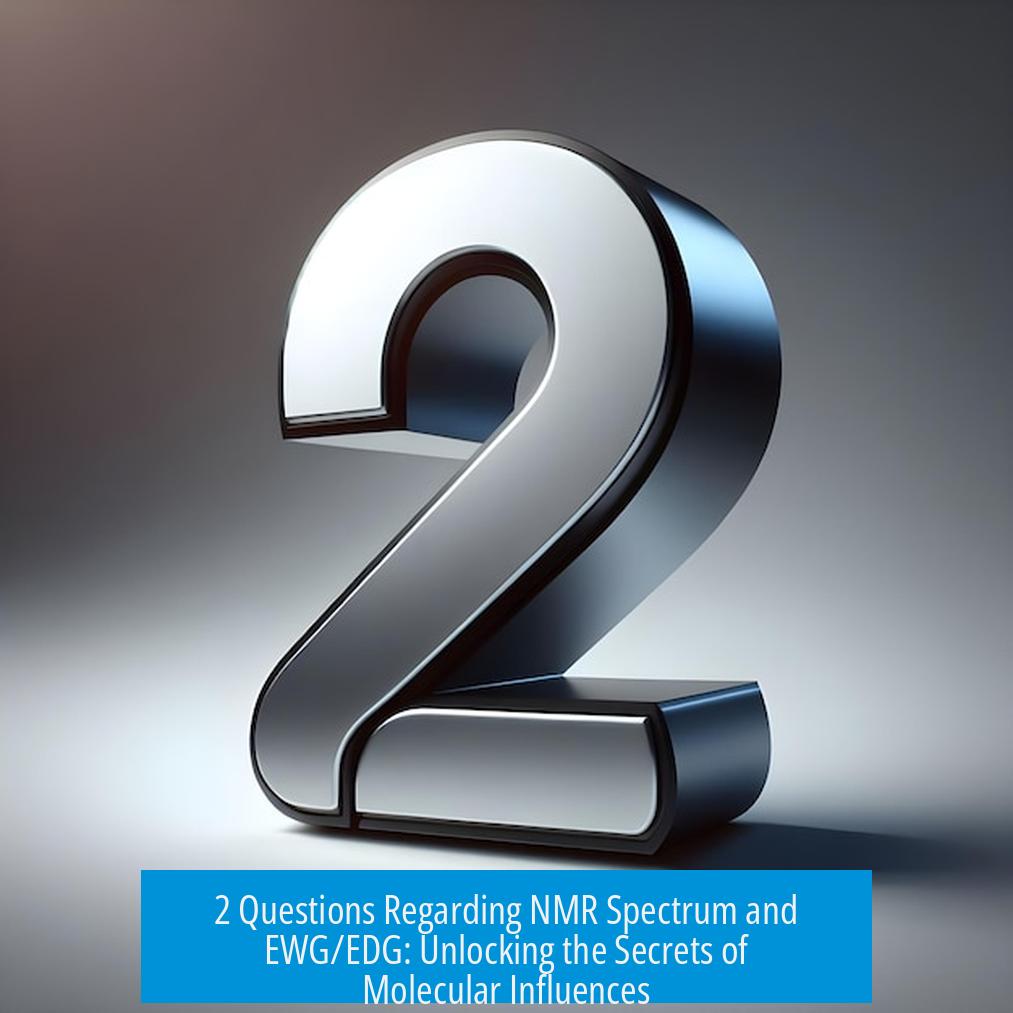
What is the effect of Electron Donating Groups (EDG) and Electron Withdrawing Groups (EWG) on NMR chemical shifts, and how do their directing effects influence aromatic substitution?
Let’s cut to the chase: EDGs cause upfield shifts in NMR spectra by donating electron density and shielding nuclei, while EWGs cause downfield shifts by withdrawing electron density and deshielding nuclei. But there’s more to the story. These groups also play strategic roles in where substitutions occur on aromatic rings. Curious to know why? Keep reading as we break it down with examples and experiments.
1. The NMR Chemical Shift Tug-of-War: Shielding vs. Deshielding
NMR (Nuclear Magnetic Resonance) spectroscopy relies on how much a nucleus is shielded or deshielded by surrounding electrons. Think of shielding like an invisible armor made of electrons:
- Electron Donating Groups (EDG): These are like electron gift-givers. They donate lone pairs—oxygen anions, alcohols, ethers, and amines are star donors. By increasing electron density around the nucleus, EDGs shield it, causing nuclei to resonate at a higher field strength (upfield shift) on the NMR spectrum.
- Electron Withdrawing Groups (EWG): These are the electron takers. They often contain a pi bond connected to an electronegative atom—think aldehydes, ketones, nitro groups, cyano groups, and esters. EWGs pull electrons away, decreasing electron density near the nucleus, which deshields it and pushes the signal downfield (downfield shift).
Consider propane’s NMR spectrum: The methyl hydrogens (-CH3) resonate at 0.899 ppm, more shielded and thus upfield compared to the methylene hydrogens (-CH2-) at 1.337 ppm. This difference arises because of subtle electronic environments around the hydrogens.
Now, imagine if you attach an EWG near those hydrogens—those hydrogens would find themselves deshielded and shifted more downfield. Swap it for an EDG, and the opposite effect happens. This interplay helps chemists identify where functional groups sit in a molecule.
2. Aromatic Substitution Directing: Who Calls the Shots?
EWGs and EDGs don’t just modify NMR peaks—they’re directors on the aromatic stage, telling substituents where to enter.
- EWG Meta Directing Dominance: When a strong EWG and a weak EDG team up, the EWG usually wins. The reason? EWGs create a partial positive charge in the resonance structures that makes the ortho and para positions less nucleophilic and less attractive for substitution. So, new groups settle at the meta position.
- EDG and EWG Interaction: If both players are strong, the story gets intricate. Strong EDGs push electron density towards the ortho and para spots, activating these sites for substitution. However, if the EWG itself is attached there, it can pull the electron density back, balancing the game.
This subtle dance defines reaction outcomes and explains why you might get unexpected products. This knowledge is especially crucial in designing pharmaceuticals or materials where precise positioning alters function dramatically.
Practical Insights and Tips for Chemists

How can this knowledge improve your lab work or research? Consider these tips:
- Use NMR Shifts as Clues: If you observe downfield shifts in your NMR data, suspect nearby EWGs. For upfield shifts, look for EDGs. This makes structural assignments more robust and less guesswork based.
- Predict Reaction Sites: When planning aromatic substitutions, examine your molecule’s substituents. Strong EWGs urge substitutions at meta positions, while strong EDGs encourage ortho and para. Plan reagents accordingly.
- Beware of Mixed Groups: When both EWGs and EDGs occupy a ring, anticipate potential conflicts. This can lead to lower selectivity. Consider protecting groups or reaction condition tweaks.
- Check Instrument Settings: Remember, NMR frequency affects absorption. A hydrogen’s resonance can differ between 60 MHz and 300 MHz instruments. So, don’t freak out if the same sample shows shifts in different labs.
The Bigger Picture: Why Should You Care?
Understanding EDG and EWG effects is not just a textbook thing. These concepts impact real-world chemistry, from synthesizing medicines to creating new materials:
- Drug developers use this knowledge to ensure the correct parts of molecules are modified, affecting drug efficacy and safety.
- Material scientists tailor electronic properties by placing groups strategically, optimizing conductivity or stability.
- Analytical chemists avoid misinterpretation of NMR data by factoring in these influences, improving structural elucidation accuracy.
Curious how these ideas apply to your work? Try analyzing a couple of molecules with contrasting EDGs and EWGs. Observe the NMR shifts. Watch reactions unfold differently based on substituent positions. You’ll find a new appreciation for the tiny electron pushes and pulls that shape chemistry.
In Summary
EDGs and EWGs wield great influence over NMR chemical shifts and aromatic substitution patterns. EDGs donate electrons, shielding nuclei and causing upfield shifts in NMR. EWGs pull electrons away, deshielding nuclei and shifting signals downfield. On aromatic rings, EWGs typically direct substitutions to the meta position, while EDGs activate ortho and para positions unless overridden by proximity effects.
Next time you stare at an NMR spectrum or plan an aromatic substitution, remember the tug-of-war happening at the electron level. It’s the difference between a successful experiment and a puzzling misstep.
“In the world of molecules, it’s all about who’s borrowing and who’s lending electrons.”
So, go ahead—examine those spectra, predict substitution sites, and master the molecular dance of EDGs and EWGs. With these insights, chemistry becomes less mysterious and far more exciting.
What causes an Electron Withdrawing Group (EWG) to shift NMR signals downfield?
EWGs withdraw electron density from nearby nuclei. This reduces shielding at the nucleus. Lower electron density makes the nucleus more exposed to the magnetic field, causing a downfield, or deshielded, shift in the NMR spectrum.
How do Electron Donating Groups (EDG) affect the chemical shifts in NMR spectra?
EDGs increase electron density around the nucleus. This added electron density shields the nucleus. As a result, the signals appear upfield in the NMR spectrum, reflecting increased shielding.
Why do EWGs often direct electrophilic aromatic substitution to the meta position?
EWGs create partial positive charges on the ring by resonance. This reduces electron density at ortho and para positions. Hence, these positions are less reactive, favoring substitution at the meta position.
How does the presence of a strong EDG influence aromatic substitution patterns in the presence of an EWG?
Strong EDGs donate electrons through resonance to ortho and para positions, activating these sites. This can override the meta-directing effect of EWGs unless the EWG is directly bonded at those positions.
Can the frequency of the NMR instrument affect the chemical shifts observed for hydrogens?
Yes. Different NMR instruments, like 60 MHz or 300 MHz, record slightly different chemical shifts due to frequency dependence. This must be considered when comparing spectra from different machines.


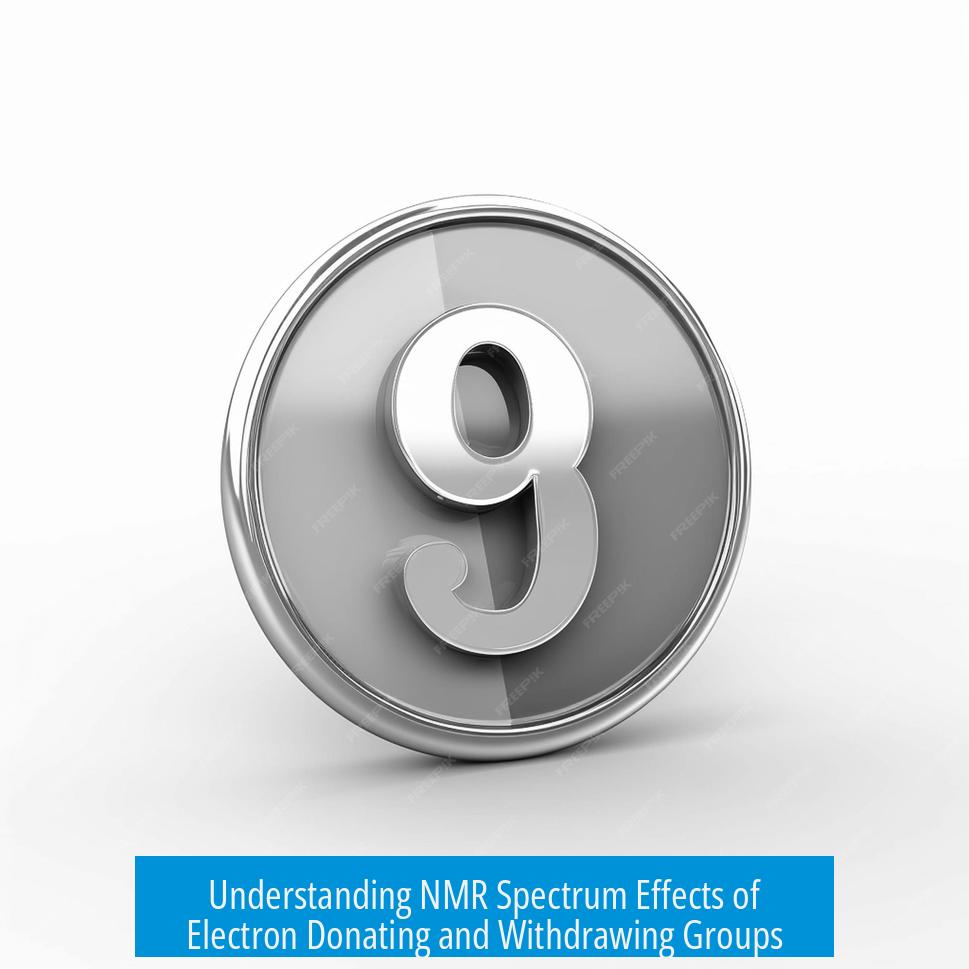

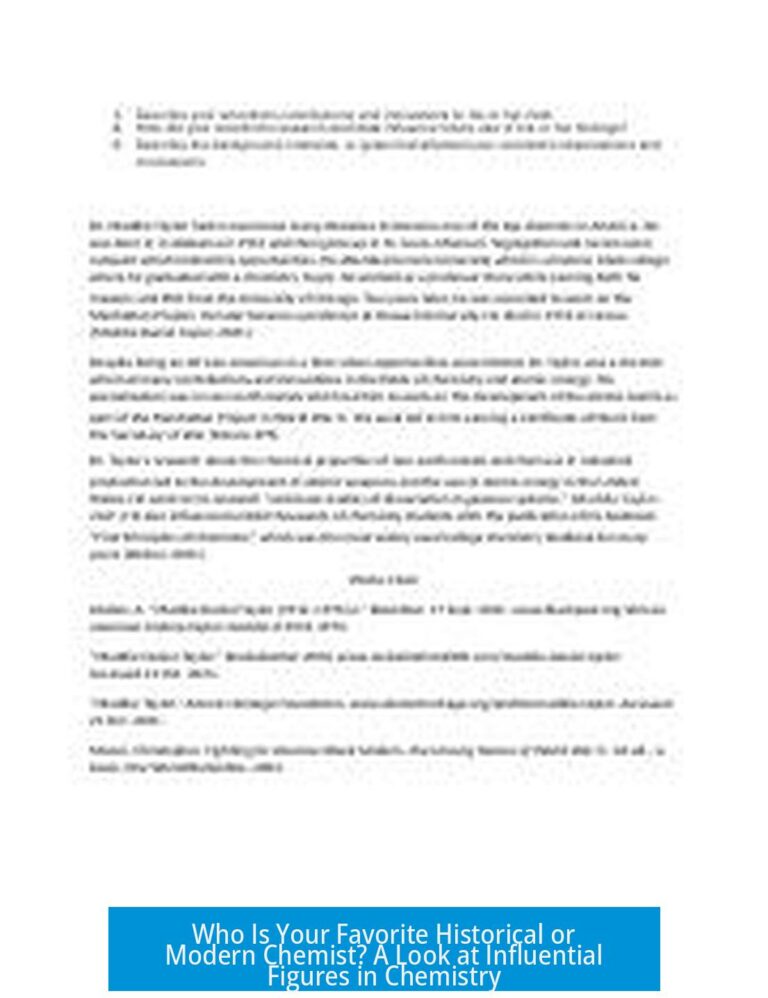
Leave a Comment